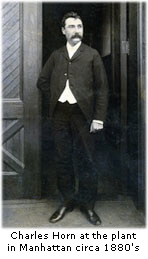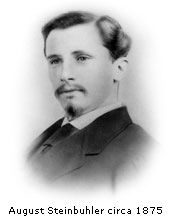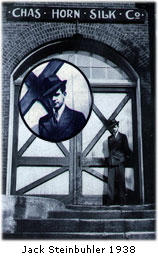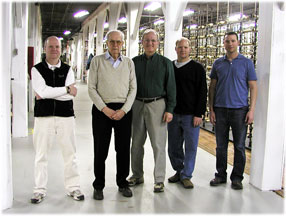Read About The History Behind The Ribbon
My father worked here, my father's father worked here, and my grandfather's father is where our legacy really began.
My great-grandfather, August Steinbuhler, arrived in New York City in 1853 after crossing the Atlantic on a sailing ship at the age of nine. Charles Horn made the same trip the year before, also at the age of nine. Both boys were part of the German Austrian emigration. I don't know many details, but by the mid 1870s, these two men had married sisters, Charlie had founded the Charles Horn Silk Company in Manhattan, and August had started his life long career as a ribbon salesman for the company.
It is exciting for me to think that our company evolved through the sweep of our country's history adjusting to changing market demands and technology. We have remained strong and vibrant after 140 years and five generations.
The small, rural village of Titusville in western Pennsylvania had, in 1859, become the birthplace of the oil industry. While Charles was building his ribbon company in NYC, Titusville was becoming a rough and ready oil boomtown. By the mid 1890s, the founding fathers of Titusville were concerned with its character and wanted to create "more civility." They decided to advertise across the country offering to build a factory for any business that would move to Titusville and hire women.
Charlie answered the advertisement. August's son, William, who was working for his "uncle" Charlie, was given the job of disassembling the looms and seeing to their installation in the new plant. In midwinter 1897, a train rolled into Titusville, and the looms were moved from the depot to the new factory by horse drawn sled. William, my grandfather, who was just twenty-two years old at the time of the move, became plant foreman, got married, and started raising a family.
Charlie had no children of his own, and William took advantage of opportunities to purchase the company. Soon, his two sons, Bill and Jack, became involved. In time, they issued forth great innovation and change. New looms and new dye machines were developed and built, many of which are still used to this day. My father, Jack, began work in 1935 and he continued to work every day until his passing in 2007; a remarkable career of over seventy years. As styles changed over the last century, products have moved from hair bows to belting for ladies' dresses and ribbon for ladies' hats. Yarns have changed from worm silk to rayon to nylon and polyester. Cotton has been a staple for shoe binding, zipper tape, and garment tape. The company's name was changed to Horn Textile after silk was no longer used.
To me, it seems there has always been the family business. My father bought out his brother in the early 1950s, and in 1971, my brother JJ and I came back to carry on the traditions of innovation and dedication. It is heartening to know the company remains a steady fixture in our community with wonderful employee loyalty. Over the decades, I have watched older employees pass on their skills to new younger ones and am amazed to think how much knowledge has accumulated throughout the factory.
My brother, JJ, moved on to run a business he created manufacturing award medallions, and I am proud to say my two sons, Chase and Peter, have taken the helm with their youthful energy and enthusiasm, along with my grandson, Zach, trailing close behind. This makes six generations. Walking the floor of the mill with its massive timber columns, I feel our rich history and am grateful to have been a part of it. I know the company remains in strong hands, and like my father, suspect I shall be around for many more years.
Sincerely,
David Steinbuhler







